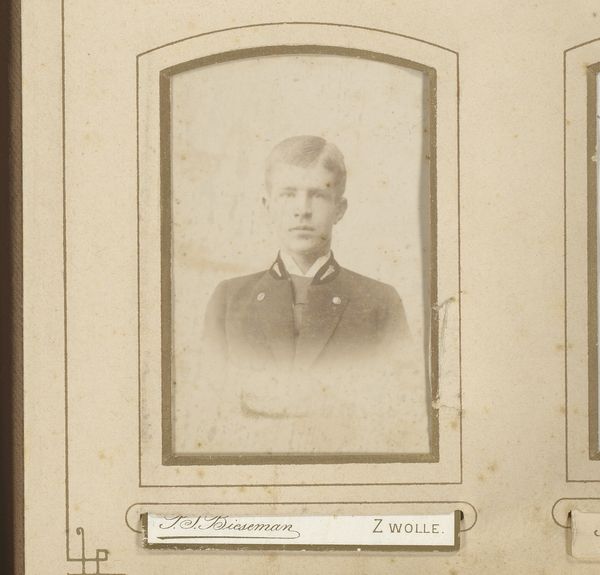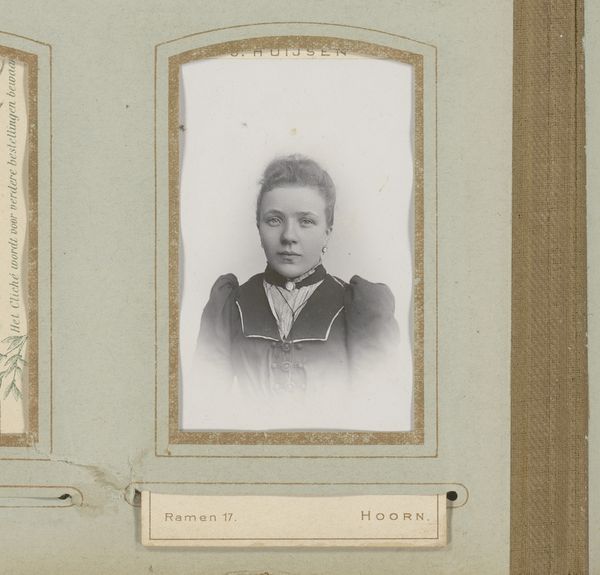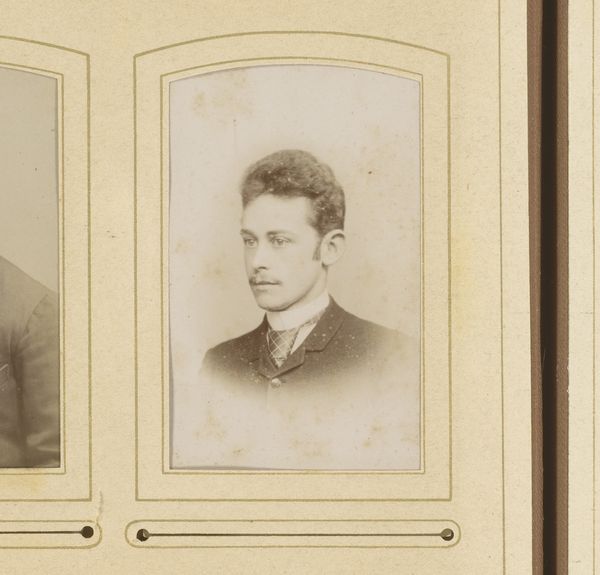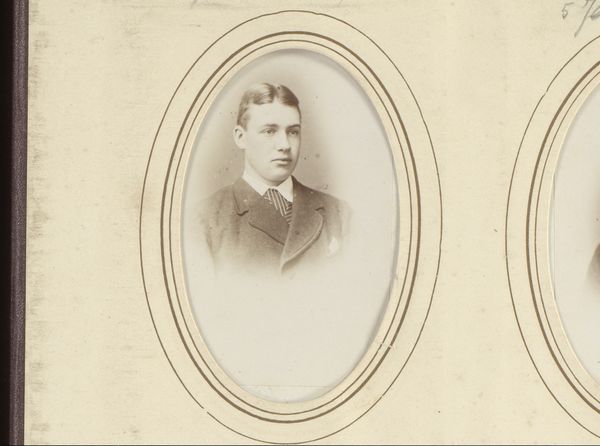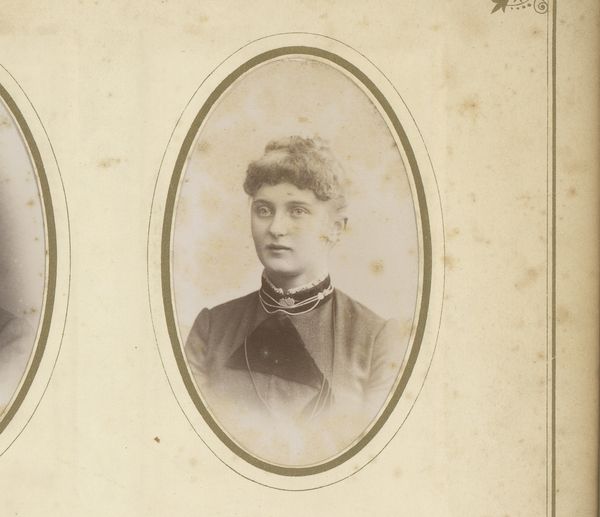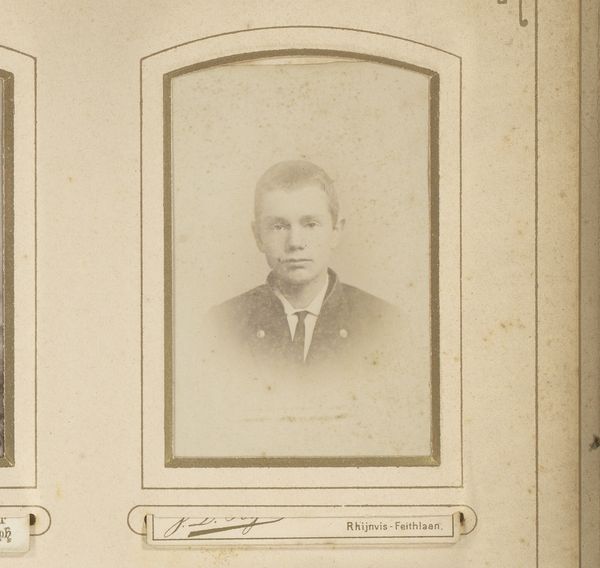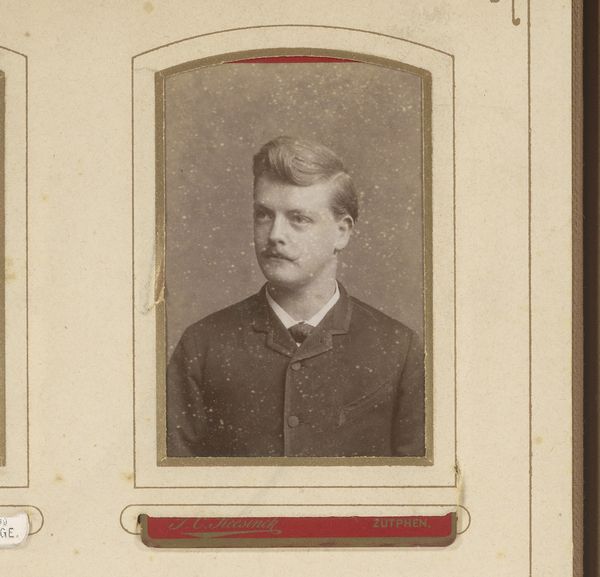
photography
#
photography
#
realism
Dimensions: height 85 mm, width 53 mm
Copyright: Rijks Museum: Open Domain
Curator: Here we have "Portret van een jongeman," or "Portrait of a Young Man," created sometime between 1860 and 1900 by Louis King Jr. It's a photographic piece, very much in the style of realism, capturing a young man's likeness with an intent for truthful representation. Editor: There's a formality, isn't there? A constrained feeling. It’s monochromatic and faded, of course, typical for photographs of the era, which gives the image this slightly ghostly presence, almost like an imprint. Curator: Exactly, those monochromatic tones speak to an aesthetic that valued sobriety and direct observation. As a cultural symbol, photographs like these solidified a kind of historical consciousness. What visual motifs do you see at work? Editor: The subject’s clothes… that tailored jacket and stiff collar. They shout bourgeois aspiration, don't they? A coded signal about status, the deliberate cultivation of a respectable image, meant to endure and project a certain narrative. It contrasts sharply with a growing bohemian sensibility bubbling underneath the surface. Curator: Very much so. Consider how these photographic studios functioned almost as sites for the performance of social identity. This wasn't just a likeness; it was a curated representation, projecting an aspirational future. His neat haircut suggests he understood that well. There is something both rigid and hopeful in the photograph. Editor: What I find really compelling is how these images operate as unintentional archives. I mean, this wasn’t necessarily considered 'art' in its moment. It was documentation, a way to visualize memory, and the constraints are revealing, like a collective performative script. These constraints really speak to the anxieties and ambitions of the moment, and, dare I say, some enduring themes in patriarchy. Curator: I agree. It is the visual echoes of those structures and their attendant ideals that makes photographs from this period so resonant today, revealing how our social and cultural performances still contain residue of our past, a sort of memory embedded in the material itself. Editor: Precisely, we are reminded that how we present ourselves—and how society interprets those representations—is still a complex and politically charged interaction. Thinking of Louis King Jr’s “Portrait of a Young Man”, it has reminded me to reflect critically on these inherited conventions. Curator: This dialogue certainly casts Louis King's snapshot as not simply an artwork but as an act of memorialization. We’ve brought new dimensions to how this generation represented itself.
Comments
No comments
Be the first to comment and join the conversation on the ultimate creative platform.


